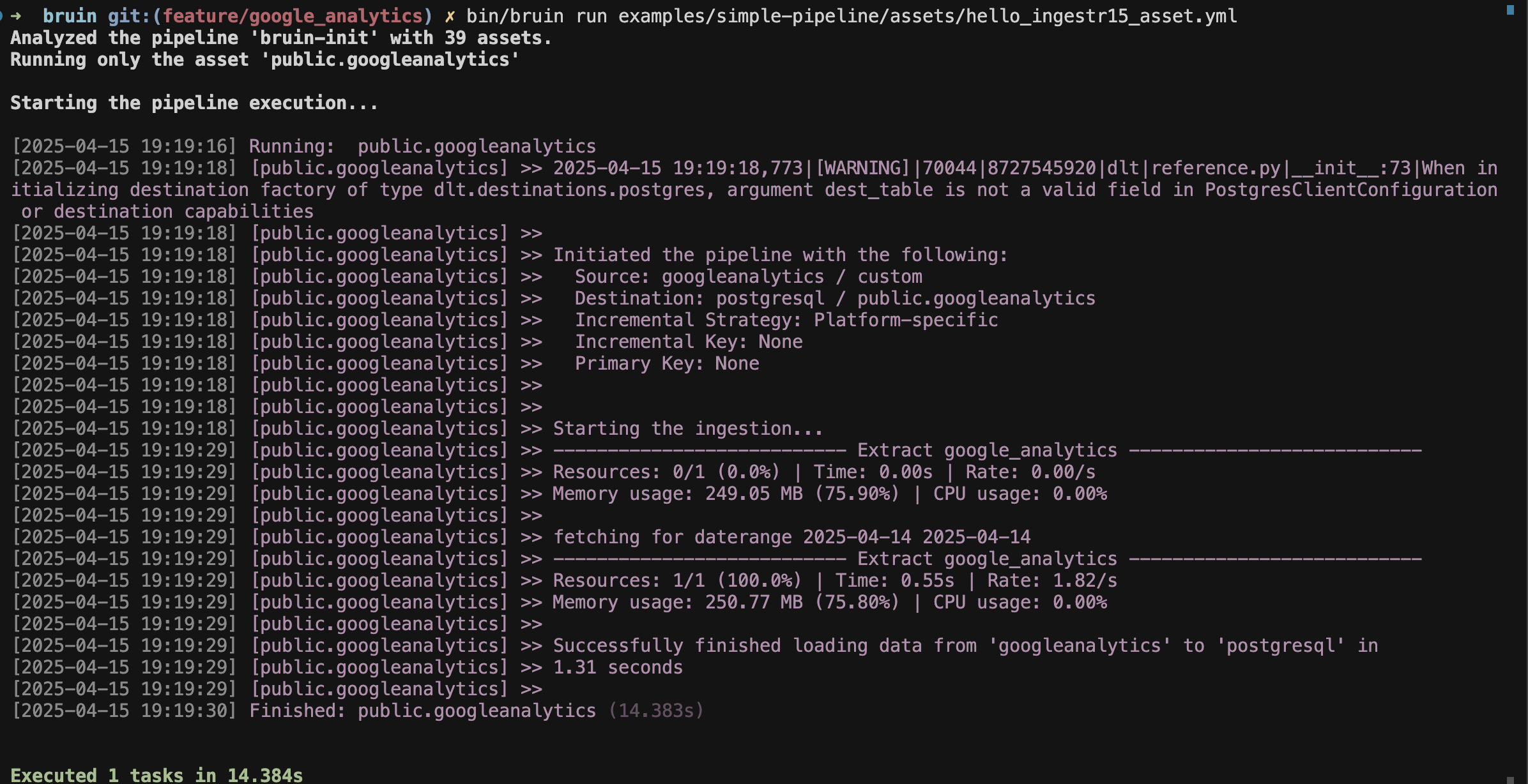Google Analytics
Google Analytics is an analytics service that helps you measure traffic and engagement across various platforms, like websites and apps.
ingestr supports Google Analytics as a source.
Bruin supports Google Analytics as a source for ingestr assets, and you can use it to ingest data from Google Analytics into your data warehouse.
To set up a Google Analytics connection, you need to add a configuration item in the .bruin.yml file and the asset file. You will need path to service_account_file and property_id.
Follow the steps below to correctly set up Google Analytics as a data source and run ingestion.
Step 1: Add a connection to .bruin.yml file
googleanalytics:
- name: "googleanalytics"
service_account_file: "/path/to/service/account.json"
property_id: "1234"service_account_file: The path to the service account JSON fileproperty_id: It is a unique number that identifies a particular property on Google Analytics. Follow this guide to know about property ID.
Step 2: Create an asset file for data ingestion
To ingest data from Google Analytics, you need to create an asset configuration file. This file defines the data flow from the source to the destination. Create a YAML file (e.g., gAnalytics_ingestion.yml) inside the assets folder and add the following content:
name: public.googleanalyticss
type: ingestr
connection: postgres
parameters:
source_connection: googleanalytics
source_table: 'custom:city,date:activeUsers,newUsers'
destination: postgresname: The name of the asset.type: Specifies the asset’s type. Set this toingestrto use the ingestr data pipeline. For Google Analytics, it will be alwaysingestr.connection: This is the destination connection, which defines where the data should be stored. For example:postgresindicates that the ingested data will be stored in a Postgres database.source_connection: The name of the Google Analytics connection defined in .bruin.yml.source_table: The name of the data table in Google Analytics to ingest data from. Currently, only one table is supported: custom, which refers to Custom Reports. These allow you to retrieve data based on specific dimensions and metrics. For more information, please visit here.destination: The name of the destination connection.
Step 3: Run asset to ingest data
bruin run assets/gAnalytics_ingestion.ymlAs a result of this command, Bruin will ingest data from the given Google Analytics table into your Postgres database.
